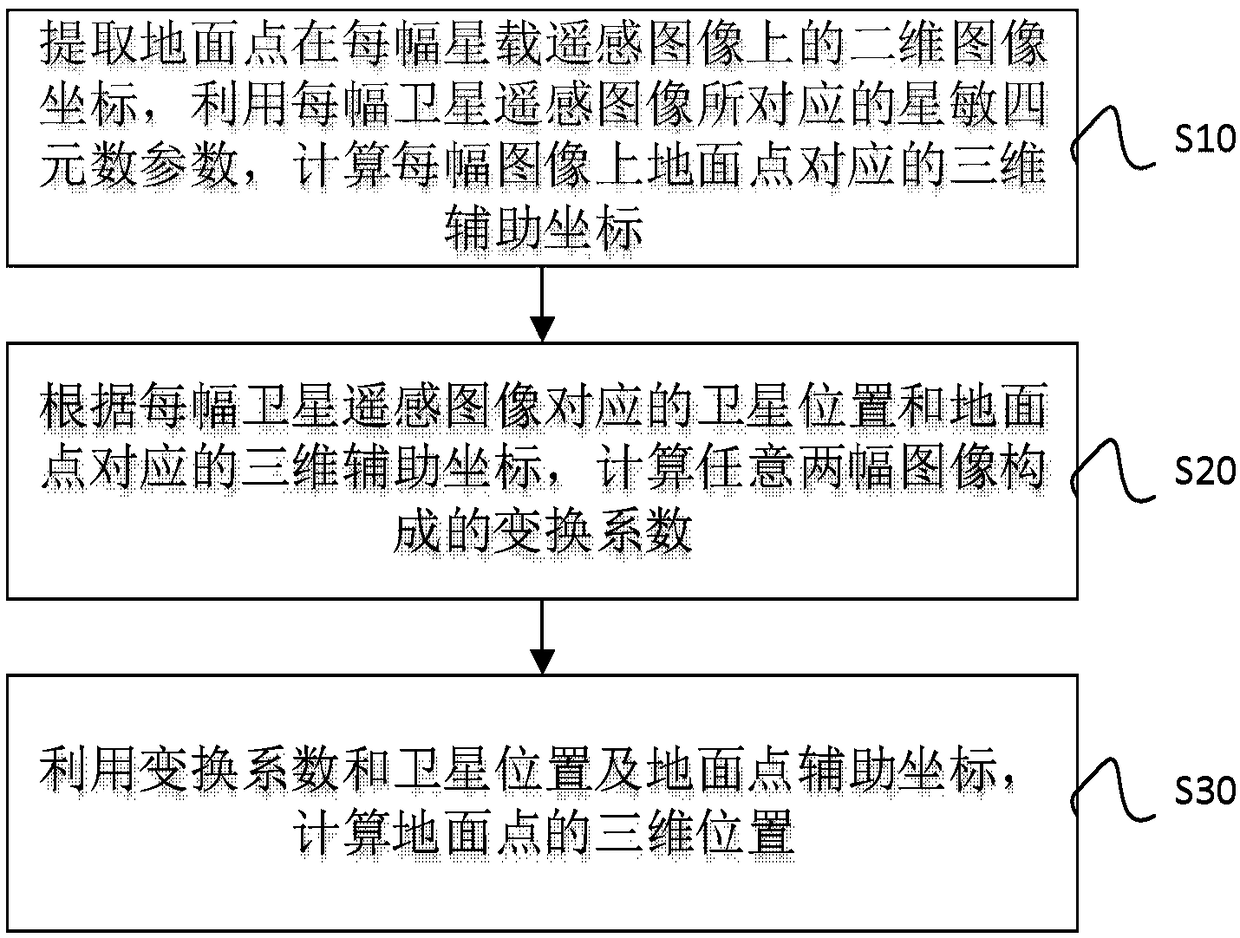Method of calculating three-dimensional positions of ground points by using sequential satellite borne remote sensing images
A technology of optical remote sensing image and three-dimensional position, which is applied in the field of remote sensing image processing, can solve problems such as complex calculation process and unsuitable for large-scale engineering application, and achieve the effect of simplifying the calculation process
- Summary
- Abstract
- Description
- Claims
- Application Information
AI Technical Summary
Problems solved by technology
Method used
Image
Examples
Embodiment Construction
[0028] The present disclosure provides a method for calculating the three-dimensional position of a ground point using a sequence of satellite-borne optical remote sensing images, including firstly extracting the two-dimensional image coordinates of the ground point on each satellite-borne optical remote sensing image, and using each satellite-borne optical remote sensing image The corresponding star-sensitive quaternion parameters are used to calculate the three-dimensional auxiliary coordinates corresponding to the ground point on each satellite-borne optical remote sensing image; secondly, according to the satellite position corresponding to each satellite-borne optical remote sensing image and the three-dimensional auxiliary coordinate corresponding to the ground point, Calculate the transformation coefficients of any two satellite-borne optical remote sensing images; finally, calculate the three-dimensional position of the ground point by using the transformation coefficient...
PUM
 Login to View More
Login to View More Abstract
Description
Claims
Application Information
 Login to View More
Login to View More - R&D
- Intellectual Property
- Life Sciences
- Materials
- Tech Scout
- Unparalleled Data Quality
- Higher Quality Content
- 60% Fewer Hallucinations
Browse by: Latest US Patents, China's latest patents, Technical Efficacy Thesaurus, Application Domain, Technology Topic, Popular Technical Reports.
© 2025 PatSnap. All rights reserved.Legal|Privacy policy|Modern Slavery Act Transparency Statement|Sitemap|About US| Contact US: help@patsnap.com



